By Alex Hines, History ’24, Ohio Honors Program, Archives Exhibition Assistant at the Mahn Center
Through the Museum Studies Certificate program at Ohio University, I was introduced to the Mahn Center and a particular room which contains an exhibition of items from the Archives and Special Collections. This room is the Ryan Room on the 5th floor of Alden Library, and it is where select items from the Cornelius Ryan collection of World War II Papers are exhibited in memory of him and his work.
The goal of this project is to unveil to the public the newly updated Ryan Room in 2023. As I was brought onto the team with the task of updating the exhibit in preparation for the June 2024 80th Anniversary of the D-Day invasion, I asked myself many questions: Who was Cornelius Ryan? What did he do? How did his work impact the way in which history is remembered? How can Ryan’s experiences and writings be used to contextualize the broader conflict which was World War II? How can the exhibit be expanded to cover more aspects of the war? With these questions in mind, I embarked on the journey of investigating Cornelius Ryan and the future of the Ryan Room Exhibit.
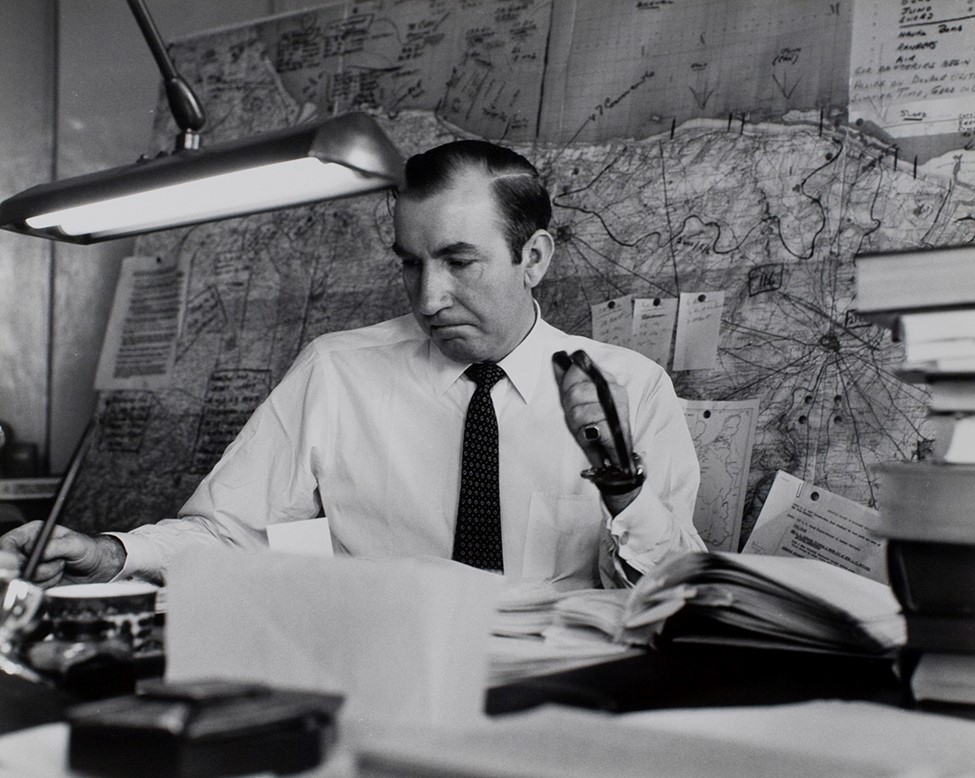
Who was Cornelius Ryan?
Cornelius John Ryan was an Irish-American journalist, author and war correspondent who was born in Dublin, Ireland on June 5, 1920 and passed away due to cancer on November 23, 1974. He was known for his detailed books and histories of major events from World War II. His most well-known books are The Longest Day, published in 1959 which details the events of D-Day on June 6, 1944; The Last Battle, published in 1965 about the story of the Battle of Berlin; and A Bridge Too Far, published in 1974 shortly before his death which tells the story of Operation Market-Garden.
Ryan’s early days as a writer were for the London Daily Telegraph in 1943, where he became a war correspondent and covered the actions of the U.S. 8th and 9th Air Forces in Germany. Over the course of the war, Ryan followed General George Patton’s 3rd U.S. Army and towards the end of the war actions in the Pacific Theater of Operation. Following the war, Ryan wrote on many international issues before emigrating to the United States in 1947, where he wrote for Time Magazine and Collier’s.
In 1956, Cornelius Ryan began extensive research for his book on D-Day, The Longest Day. His research for this book and his other two, comprises thousands of written and recorded interviews with individuals who were involved in the war and from many different nationalities, such as America, Great Britain, Germany and others. These interviews are preserved as a part of the Cornelius Ryan Collection of World War II Papers in the Archives and Special Collections at Alden Library.
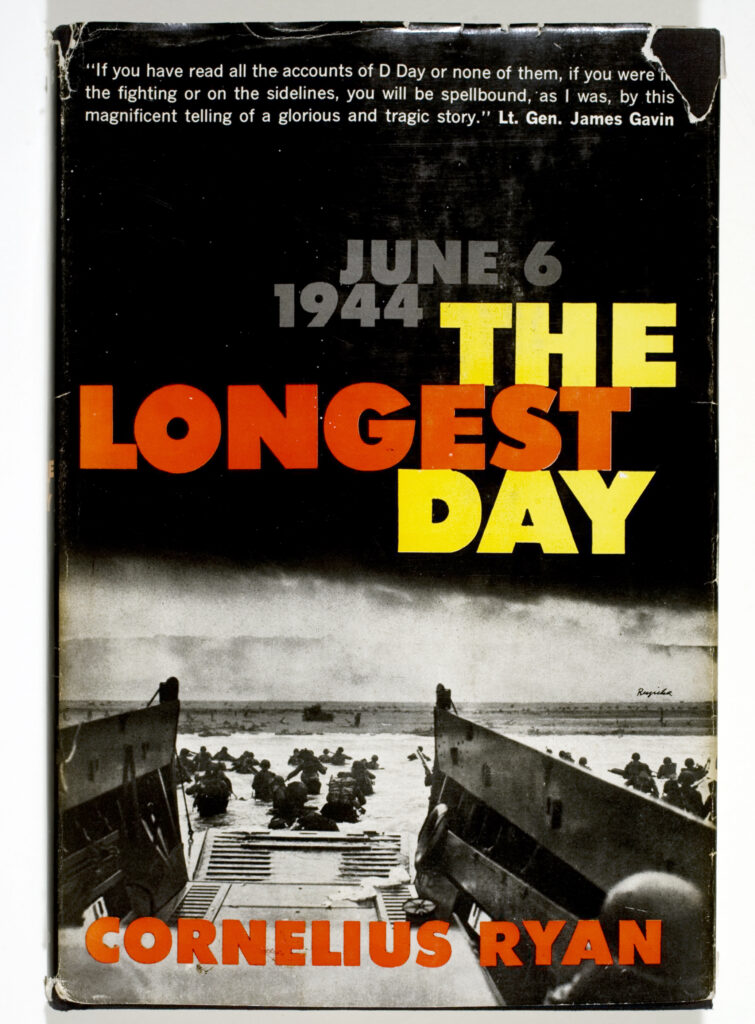
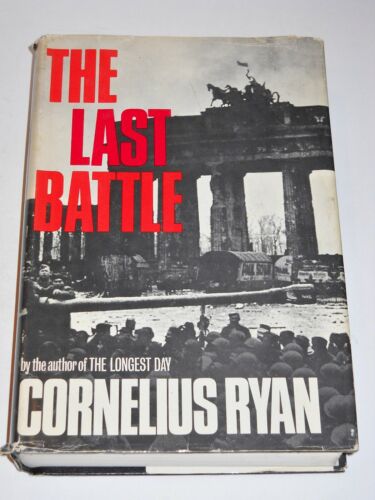
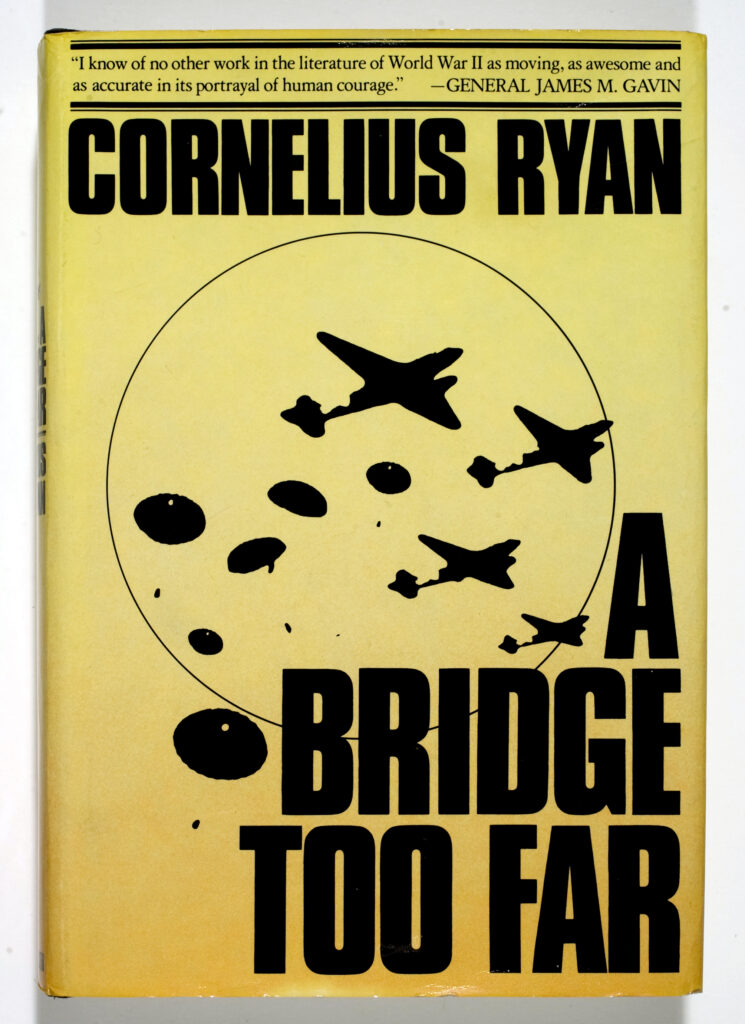
How did Cornelius Ryan’s work impact the way in which history is told?
Before Cornelius Ryan wrote his first book on D-Day, The Longest Day, there existed no other account of that invasion which was as detailed and committed to telling the history from the perspective of all of the parties involved. As Ryan read the books which had been so far written about D-Day in the 1950s, he realized that he could fill this historic gap.
Over the period of several years, Ryan conducted thousands of interviews and distributed questionnaires to anybody who was involved in the conflict whom he could reach. His methodology and thoroughness resulted in the most accurate account of D-Day which had been written and remains to this day to be one of the most successful history books ever written. It was published in a multitude of languages, and Ryan was recognized for his contributions for telling what had been previously untold. He continued this thorough research as he wrote his next books over the coming decades: The Last Battle and A Bridge Too Far.
Ryan gained international recognition for his works, and received commemorations from Presidents Dwight D. Eisenhower, John F. Kennedy, Richard Nixon and various leaders from European communities and nations. His work inspired and fundamentally changed the ways in which historical research and writing were conducted, as well as inspiring the work of other war historians.
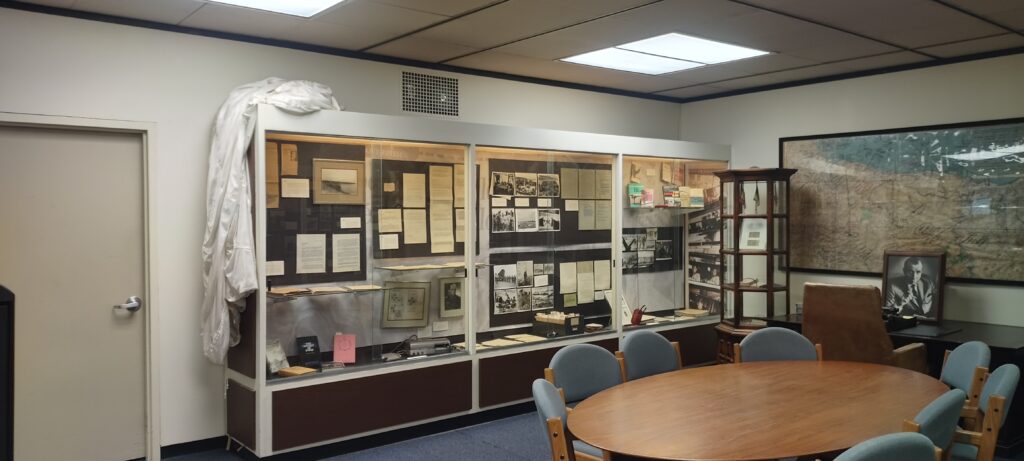
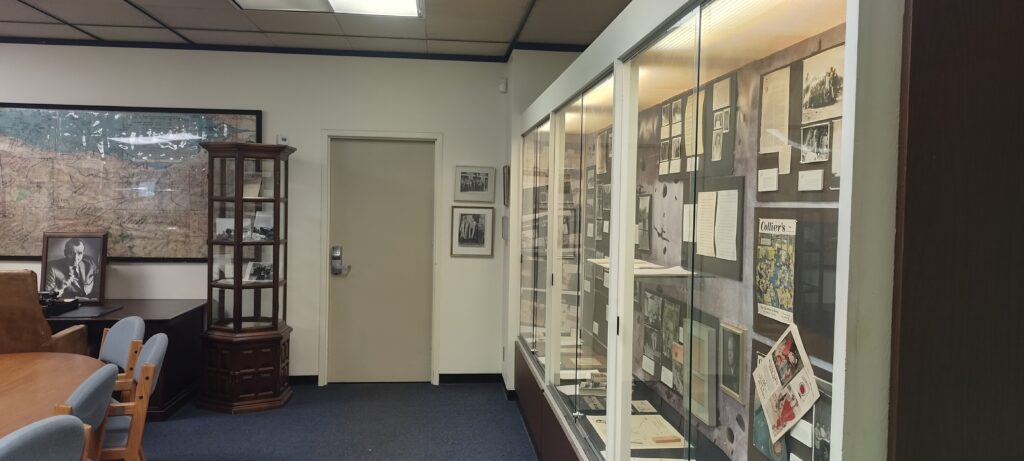
The Ryan Room Exhibit
The Ryan Room as it exists today was originally put together in the 1980s following the donation of Cornelius Ryan’s papers, and since then has experienced very few updates. The room features two wall cabinets which display some of Ryan’s interviews for each of his three books, excerpts from his early work as a journalist with the London Daily Telegraph, his coverage of space missions while working for Collier’s, and pictures of many different aspects and individuals from World War II as well as set photos from the 1962 film The Longest Day, inspired by his book. The room also has Ryan’s desk and chair, above which hangs a large map of the D-Day invasion beaches with hand-drawn lines and troop positions from that day. On the opposite wall there are notable commemorations presented to Ryan both before and after his death in 1974.
The work which I have been tasked with is to update the Ryan Room and to broaden the exhibit to cover five main aspects of the war: D-Day, the Pacific Theater, Glider and Airborne Troops, War Correspondents, and local Athens connections to the war. To accomplish this, we must meticulously document what is currently being displayed, and then determine what will remain and what will return to storage.
Next, and what is currently being worked on, is the exploration and research into the many other World War II-related collections in the Mahn Center. Contained within hundreds of boxes are documents, photographs, diaries, scrapbooks, and artifacts from the war era. These are being explored and sorted into the five above categories, where in future processes they will be further refined and planned for possible exhibition.
The goal of this project is to unveil to the public the newly updated Ryan Room in 2023. Be sure to keep an eye out for future blog posts with updates of the Ryan Room!